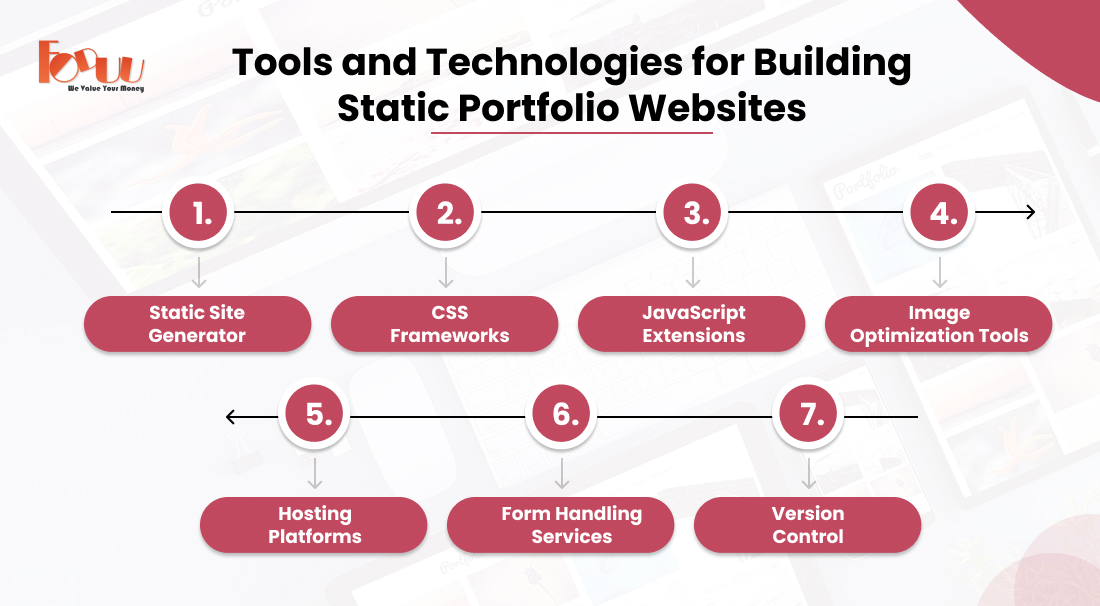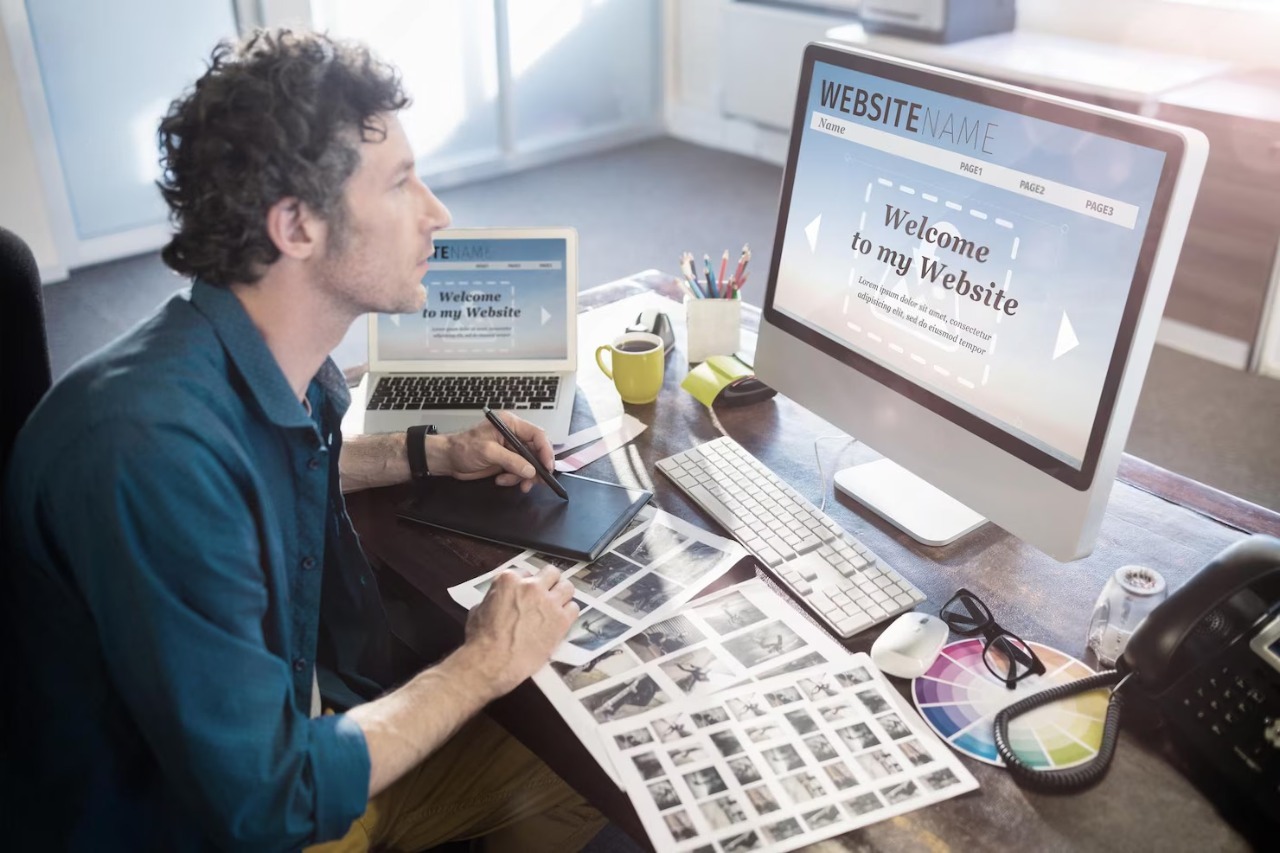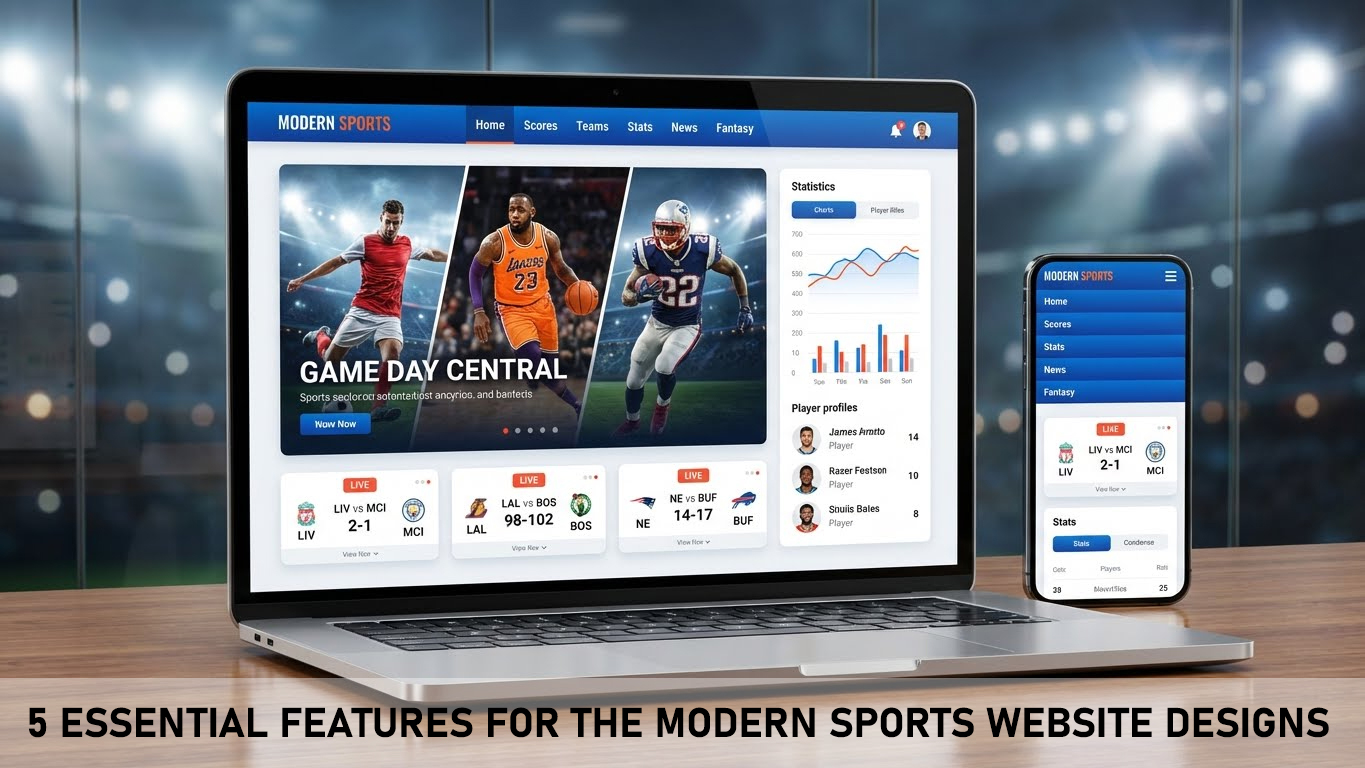Your digital platform becomes your initial introduction to the public when service providers and freelancers need it the most. A properly organized portfolio website has become essential rather than optional. Your digital business card presents your professional abilities and past projects to prospective clients or employers from any location in the world.
Static websites are now widely accepted for portfolio creation because they deliver fast performance and maximum reliability. These websites provide exceptional speed alongside strong security features at a low cost while allowing users total design freedom to display their professional work successfully. This text explains how static websites best display portfolios by covering their key features and advantages with available tools and techniques.
What is a Static Website?
The user receives the full website contents (HTML, CSS, JavaScript, images, and more) just as the developer stored them in a fixed website. A visitor views the same website construction on each page because the content remains fixed until dynamic websites require processing and database access at runtime.
Users access this type of website directly from its stored content without needing database services. All visitors see the same basic pre-made webpages during each portfolio visit. Your website works quickly and protects data better while cutting operating costs because of its basic nature.
Why Choose a Static Website for Your Portfolio?

1. Exceptional Loading Speed and Performance
A website that loads quickly helps maintain interest in visitors. Research indicates that site visitors exit when page loading takes over several seconds. A portfolio site must load speedily because it uses various media elements like pictures and videos.
Static sites provide unparalleled speed since there are no server-side processing or database queries. All pages are already completed and prepared to be served instantly whenever requested. CDNs further improve performance by hosting the content from the closest server node, which results in lightning-fast loading times no matter where the visitor is located.
For artists, quick loading speeds not only maintain visitors' attention but also render your site more search engine-friendly, like Google, which favors speed in its algorithmic prioritizations.
2. Better Security and Reliability
Security is a top priority when hosting a website. Portfolio sites, although frequently minimalist, can be the target of cyberattacks if dynamically constructed with insecure backend infrastructure. Static sites significantly minimize the attack surface since they remove typical vulnerabilities of dynamic websites, including SQL injections, cross-site scripting (XSS), and server-side code exploits.
Because static websites don't use a database or server-side processing, they reduce the number of potential failure points. They're resistant to most common methods of hacking since there is no server-side code to take advantage of. And hosting providers also frequently provide SSL certificates for free, which increases your site's security and professionalism as well.
Another significant advantage is the stability of static sites. There is less to malfunction because there are fewer moving pieces. Static websites only really lose service if the entire host server goes down—which is unlikely on cloud hosting nowadays and CDNs.
3. Cost-Effectiveness and Affordability
One of the most attractive features of static websites is that they are incredibly cheap to build and maintain. With no need for costly hosting plans, databases, server upkeep, or complicated backend frameworks, the static website cost is significantly lower than dynamic websites. This makes static websites a cost-effective option for many businesses and individuals.
There are even several platforms like GitHub Pages, Netlify, and Vercel that offer free hosting for static websites, complete with impressive features like continuous deployment and free SSL certificates. The cost of static website can be reduced even further by leveraging these free hosting services, which make it an appealing option for small agencies, students, and freelancers who are looking to minimize their expenses.
For small agencies, students, and freelancers with limited budgets, static websites enable you to develop professional online portfolios without the constant financial burden.
4. Complete Design Control and Creative Autonomy
Your portfolio site must showcase your professional, unique, and creative style. Static sites offer complete control over design and page structure, unlike content management systems such as WordPress, which tend to limit you within template boundaries.
With a static site, you can play around with layouts, color palettes, fonts, animations, and interactive elements, and you build a digital space that truly embodies your professional or personal brand. A minimalist look or an out-and-out dynamic interface is your prerogative with static sites, as you have the whiteboard on which to paint it free from constraints.
In addition, since the code is coded by hand or constructed with static site generators, each component can be optimized for performance, responsiveness, and usability.
5. Enhanced Search Engine Optimization (SEO)
Search engine visibility is important for any portfolio site. Static sites are SEO-friendly by nature since their layout is cleaner, less complex, and easier for search engines to crawl.
Because static sites are faster to load, they result in a smoother user experience—a primary consideration of search engines when ranking pages. The lack of bulky scripts or server-side processing makes your content instantly accessible for crawling by search engine spiders.
Additionally, static sites enable you to have full control over each component of your SEO strategy. From clean URLs, meta tags, image alt attributes, and header tags to XML sitemaps, you have complete authority to tweak your site for improved ranking.
6. Simplified Maintenance and Deployment
Having a static portfolio site is much easier than dynamic sites or CMS-based alternatives. No software updates, plugin exploits, or database upkeep is necessary. Updates are easy enough—simply overwrite or edit the files of HTML, CSS, or JavaScript where they're needed and redeploy.
For those comfortable with technology, version control software such as Git simplifies even having a static website. You can easily follow changes, roll back to old versions, and work with others in tandem.
Deployment is simplified as well using contemporary tools and platforms. Applications such as Netlify, Vercel, and GitHub Pages provide continuous deployment pipelines so you can push website updates straight from your code repository.
7. Responsive and Mobile-Friendly Design
Since most internet traffic is from mobile devices, having your portfolio be mobile-friendly is not an option. Static sites are great at responsiveness since they are designed from scratch with clean, new CSS frameworks such as Tailwind CSS or Bootstrap.
Designing a static portfolio website allows you to fine-tune how your content appears on desktops, tablets, and smartphones, ensuring that every visitor gets an optimized experience, no matter what device they use.
8. Future-Proof and Scalable
Static sites are naturally future-proof in that they don't rely on sophisticated backend frameworks or databases that might become obsolete or deprecated. So long as HTML, CSS, and JavaScript are fundamental web technologies, your static site will keep working perfectly.
Scalability is yet another key benefit. As static files are simple to duplicate and distribute through CDNs, your site will be able to deal with lots of traffic without suffering any loss of performance. You may receive 100 visitors a month or 100,000; your static site will scale with ease.
Related Post: 17 Basic Elements For Web Design
Key Features of a Successful Static Portfolio Website

Building a static portfolio website is not merely uploading your work onto the web. It's about showcasing it in such a way that it engages people and turns them into clients, employers, or collaborators. These are the most important sections that should be part of every portfolio website:
Engaging Homepage
Your home page is your first impression. It needs to instantly tell your visitor who you are, what you do, and why they should hire or work with you. Employ good visuals, easy-to-understand messaging, and compelling content to make a strong impression.
Project Showcase or Gallery
Emphasize your best work using dedicated project pages or an interactive gallery. Add high-quality images, videos, detailed descriptions, and the background story of each project to provide visitors with deeper insight into your creative process and expertise.
About Me Section
Personalize your portfolio with a personal touch. Describe your professional experience, accomplishments, interests, and values. Add a professional photo and a brief biography that captures your personality and work ethics.
Skills and Expertise
List your main competencies, tools, software, and technologies you are skilled at. Make this section visually interesting using icons, graphs, or infographics.
Testimonials and Reviews
Establish credibility and trust by sharing good words from clients, collaborators, or mentors. Use real names, job titles, and even photos if available.
Contact Information
Make it easy for visitors to get in touch. Provide multiple contact options such as email, phone, social media links, and a contact form powered by static form services like Formspree or Netlify Forms.
Blog or Insights (Optional)
If you like writing or wish to publish your knowledge, include a blog section. Blogging about your business, your projects, or the challenges that you have faced can enhance your SEO and make you an industry leader.
Downloadable Resume
Provide a downloadable PDF copy of your resume for prospective employers or clients who find a traditional CV format more convenient.
Tools and Technologies for Building Static Portfolio Websites

Static websites have become simpler to build and keep up with because of the strength of tools and technologies available today:
Static Site Generators (SSGs): Jekyll, Hugo, Gatsby, Eleventy (11ty)
CSS Frameworks: Tailwind CSS, Bootstrap, Bulma
JavaScript Extensions: Vanilla JS, GSAP for animations, Three.js for 3D graphics
Image Optimization Tools: TinyPNG, ImageOptim, Squoosh
Hosting Platforms: GitHub Pages, Netlify, Vercel, Cloudflare Pages
Form Handling Services: Formspree, Netlify Forms
Version Control: Git and GitHub for group work and backup
Common Errors to Steer Clear of in Portfolio Static Websites
While static websites are highly beneficial, there are some errors that can negate their efficiencies:
Cramming pages with heavy images or non-optimized media
Forgetting mobile responsiveness
Applying excessive animations or scripts that decrease performance
Lack of apparent calls-to-action (CTAs)
Disregarding SEO best practices such as missing meta descriptions or alt tags
Leaving out analytics setup, denying you the ability to measure site performance and visitor action
The Future of Static Portfolio Websites
The future of static websites appears bright as web development trends continue to prioritize speed, security, and user experience. New technologies such as Progressive Web Apps (PWAs) are making static sites accessible offline and introducing app-like interfaces. Jamstack architecture is gaining traction, further ensuring the utility of static websites.
Headless CMS integration is also becoming popular, enabling static websites to retrieve dynamic content without sacrificing performance or security. With the latest improvements in web development tools, static websites are getting even more accessible, powerful, and versatile.
Conclusion
Static websites have turned out to be the perfect solution for portfolio sites, with a combination of speed, security, flexibility, and economy that is hard to beat. They allow creative professionals to create distinctive, visually appealing digital portfolios of their work without the complication and expense of dynamic sites or content management systems.
Whether you're a designer, developer, photographer, writer, or agency, a static website gives you complete control over every element of your portfolio, allowing it to represent your creativity, professionalism, and attention to detail. By opting for a static website, you future-proof your online presence, improve your SEO, and offer a smooth user experience—all essential drivers of success in a rapidly competitive digital age.
Looking to create a stunning portfolio with a static website? Our expert team at FODUU specializes in designing affordable static websites tailored to showcase your work beautifully. Get in touch today.
Related Post: 5 Reasons to Choose a Static Website




